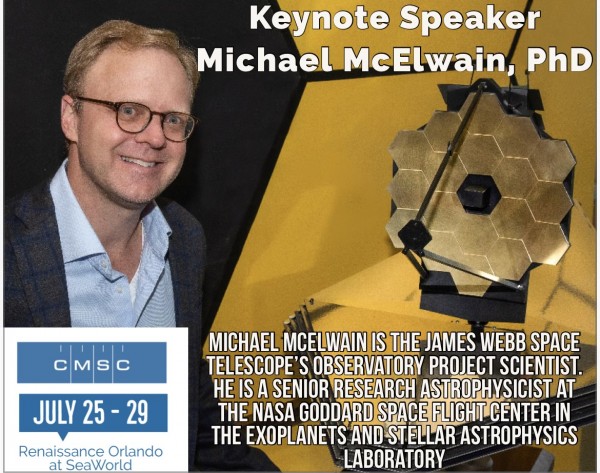Michael McElwain
The James Webb Space Telescope Mission: Science Enabled by Metrology

Michael McElwain
The James Webb Space Telescope (Webb) is a large, infrared space telescope that recently completed its on-orbit commissioning activities and will now embark on the first year of approved science. Its architecture includes many first-of-its-kind innovations for space, including a segmented primary mirror that is 6.6 m in diameter and a 5-layer sunshield used to passively cool the telescope and its four science instruments. The entire system relied heavily on metrology tools, from verifying optical surfaces at cryogenic temperatures to measuring precise alignments when deployed at ambient temperatures in 1-g. This keynote speech will provide a short history of the Webb mission, a discussion of the metrology applications used in integration and testing, an overview of our on-orbit commissioning process, and a presentation of the early science highlights.
Speaker Biography
Michael McElwain is a research astrophysicist at the NASA Goddard Space Flight Center, where is in the Exoplanets and Stellar Astrophysics Laboratory and the Observatory Project Scientist for the James Webb Space Telescope. His research interests include specialized instrumentation for and carrying out exoplanet detection and characterization with direct imaging, transit spectroscopy, and radial velocities. He earned his PhD at the University of California, Los Angeles, where he was a member of the Infrared Laboratory. He was a postdoctoral researcher at Princeton University and a science and technology policy fellow at the National Academies before joining NASA Goddard.
Michael W. McElwain, PhD
JWST Observatory Project Scientist
Exoplanets and Stellar Astrophysics Laboratory
NASA Goddard Space Flight Center
w: (301) 286-6094






